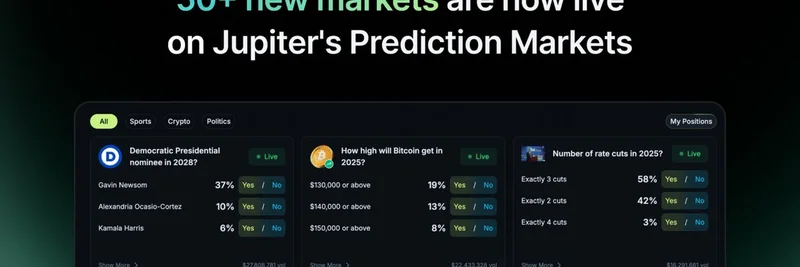WCETH is a BEP-20 token on BNB Smart Chain that represents an Ethereum-linked asset, allowing ETH-derived value to be used in BNB Chain’s faster, lower-fee DeFi environment. The contract you should verify and interact with is 0x7a470a72efbb07901bcc1c825776c7981dcc492f on BNB Chain.
Quick facts
- Network: BNB Smart Chain (BSC)
- Standard: BEP-20 (BNB Chain’s equivalent to Ethereum’s ERC-20)
- Symbol: WCETH
- Contract: 0x7a470a72efbb07901bcc1c825776c7981dcc492f
- Decimals: 18
- Supply/holders snapshot: BscScan has shown a total supply of about 6,267.533 WCETH and 9 holders at the time of research; always re-check the latest figures on BscScan.
What “wrapped” means (in simple terms)
ETH is the native coin of Ethereum. It predates the ERC-20 token standard, so by default it doesn’t plug into token-based DeFi apps the same way ERC-20 tokens do. “Wrapping” is the process of locking the original asset (like ETH or another ETH-derived token) and issuing a token that follows the local chain’s standard (ERC-20 on Ethereum, BEP-20 on BNB Chain) at a 1:1 ratio. You can later redeem (unwrap) the wrapped token back to the original, minus fees.
WCETH: two common attributions you’ll see
You may encounter two descriptions for WCETH at this address on BNB Chain:
- Wrapped Ether (Wormhole): Indicates the asset was bridged via the Wormhole protocol, where ETH is locked on Ethereum and a BEP-20 representation is minted on BNB Chain.
- Wrapped cETH (Compound Ether): Indicates the asset represents bridged cETH, the interest-bearing token from the Compound lending protocol.
These labels describe different sources for the “underlying” asset. The on-chain truth lives in the bridge’s canonical registry and the token’s metadata. Before interacting, verify the token name, symbol, and any bridge references on BscScan and, if applicable, the bridge explorer (e.g., Wormhole’s token registry). If the token name appears as “Wrapped CETH,” it suggests a cETH-derived wrap; if it’s labeled “Wrapped Ether (Wormhole),” it suggests an ETH-derived wrap via Wormhole.
How bridging typically works
- Lock: The original asset (ETH or cETH) is locked or escrowed on its home chain.
- Mint: A corresponding BEP-20 token (WCETH) is minted on BNB Chain at a 1:1 ratio.
- Redeem: To go back, you burn WCETH on BNB Chain and unlock the original asset on its home chain.
Because bridges are separate systems, risk profiles differ by implementation. Some rely on decentralized guardians; others have more centralized operators.
Why use WCETH on BNB Chain?
- Interoperability: Move ETH-derived value into BNB Chain’s DeFi ecosystem, which is EVM-compatible but distinct from Ethereum.
- Lower fees, faster blocks: BNB Chain generally offers lower gas and faster confirmations than Ethereum, making routine DeFi actions cheaper and quicker.
- DeFi access: Use WCETH in BNB Chain apps—trading on DEXs, providing liquidity, lending/borrowing, and yield strategies.
- Liquidity and composability: Wrapped assets help liquidity flow between ecosystems, enabling more efficient markets.
Where to trade and track WCETH
Because liquidity can be limited, always check pool depth first. Common BNB Chain venues include:
- PancakeSwap
- Biswap
- ApeSwap
- You can also track and access WCETH markets via gmgn.ai
Tip: If WCETH doesn’t appear by default, paste the contract address directly into the DEX to avoid fake lookalikes.
How to add WCETH to your wallet
- Install a BNB Chain–compatible wallet like MetaMask or Trust Wallet.
- Switch your network to BNB Smart Chain (check BNB Chain docs).
- Add custom token: 0x7a470a72efbb07901bcc1c825776c7981dcc492f, 18 decimals, symbol WCETH.
- Always confirm you’re using the exact contract from BscScan.
Market and liquidity notes
BscScan has shown a $0.00 placeholder price for this token, which usually means thin or inactive liquidity on popular aggregators. Low-liquidity tokens can still trade on-chain, but:
- Price impact can be severe on small pools.
- Slippage tolerance should be set conservatively.
- It may be hard to execute larger orders without moving the market.
Key risks to understand
- Bridge risk: Bridges can be targeted by exploits or operational failures. If the bridge is compromised, the 1:1 backing may break, causing depegging. See examples discussed around the Wormhole exploit.
- Counterparty/centralization: Some bridges rely on centralized custodians or multisigs.
- Smart contract risk: DEXs, lending markets, and farms that integrate WCETH can have bugs.
- Low liquidity: Wider spreads, higher slippage, and more volatile pricing.
- Scam risk: Fake tokens and spoofed websites are common. Review DFPI’s guidance and be skeptical of “too good to be true” yields (DFPI Crypto Scam Tracker). For background on verifying ETH-derivative tokens on BNB Chain, see this practical primer from Meme Insider: ETH on BNB Chain—risks and how to verify.
Verification checklist (do this before you trade)
- Contract address: Match exactly to 0x7a470a72efbb07901bcc1c825776c7981dcc492f.
- Token metadata: Check name/symbol (“WCETH”) and decimals (18).
- Holders and transfers: Review holder distribution and recent activity.
- Source code/readme: If verified, read notes for bridge references (e.g., Wormhole) or wrapping logic.
- Bridge registry: If the token claims to be a wormholed asset, check the official Wormhole token list or relevant bridge explorer. If it claims to be cETH-wrapped, verify the mint/burn path back to Compound’s cETH.
- Test first: Send a small test transaction before moving larger amounts.
- Approvals hygiene: Use minimal allowances and periodically review/revoke approvals with your wallet’s tools.
Common ways to use WCETH on BNB Chain
- Trading: Swap WCETH against BNB, stablecoins, or other assets on PancakeSwap and peers.
- Liquidity provision: Pair WCETH with another token in a pool to earn fees, mindful of impermanent loss and pool depth.
- Lending/borrowing: If a platform lists WCETH, you may supply it as collateral or borrow against it. Validate oracle sources and risk parameters before committing funds.
- Yield strategies: Staking, vaults, or farms may exist, but weigh smart contract and strategy risks carefully.
Developer and power-user notes
- BEP-20 interface: WCETH supports standard functions like transfer, approve, transferFrom, balanceOf, and allowance—similar to ERC-20 on Ethereum.
- EVM compatibility: Contracts and tooling you know from Ethereum generally work on BNB Chain with network configuration changes.
- Operational safeguards: Consider rate-limiting, allowlist checks, and robust oracle design if integrating WCETH into protocols.
Bottom line
WCETH brings ETH-derived utility into BNB Chain’s high-throughput DeFi environment. However, the exact “underlying” (ETH via Wormhole vs. cETH via another bridge) can vary by implementation—so verify the bridge origin and token metadata before using it. Given limited liquidity and the well-known risks of cross-chain assets, approach WCETH with careful due diligence, start small, and stick to reputable platforms and tools.
This article is for informational purposes only and is not financial advice. Always do your own research and verify contract details before interacting with any token.




